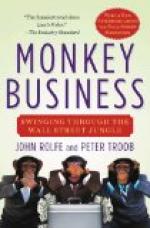“He was in luck to have this storm,” muttered Coquenil. Then, in reply to Pougeot’s look: “I mean the thunder, it deadened the shot and gained time for him.”
“Him? How do you know a man did it? A woman was in the room, and she’s gone. They telephoned that.”
The detective shook his head. “No, no, you’ll find it’s a man. Women are not original in crime. And this is—this is different. How many murders can you remember in Paris restaurants, I mean smart restaurants?”
M. Pougeot thought a moment. “There was one at the Silver Pheasant and one at the Pavillion and—and——”
“And one at the Cafe Rouge. But those were stupid shooting cases, not murders, not planned in advance.”
“Why do you think this was planned in advance?”
“Because the man escaped.”
“They didn’t say so.”
Coquenil smiled. “That’s how I know he escaped. If they had caught him they would have told you, wouldn’t they?”
“Why—er——”
“Of course they would. Well, think what it means to commit murder in a crowded restaurant and get away. It means brains, Lucien. Ah, we’re nearly there!”
They had reached Napoleon’s arch, and the automobile, swinging sharply to the right, started at full speed down the Champs Elysees.
“It’s bad for Gritz,” reflected the commissary; then both men fell silent in the thought of the emergency before them.
M. Gritz, it may be said, was the enterprising proprietor of the Ansonia, this being the last and most brilliant of his creations for cheering the rich and hungry wayfarer. He owned the famous Palace restaurant at Monte Carlo, the Queen’s in Piccadilly, London, and the Cafe Royal in Brussels. Of all his ventures, however, this recently opened Ansonia (hotel and restaurant) was by far the most ambitious. The building occupied a full block on the Champs Elysees, just above the Rond Point, so that it was in the center of fashionable Paris. It was the exact copy of a well-known Venetian palace, and its exquisite white marble colonnade made it a real adornment to the gay capital. Furthermore, M. Gritz had spent a fortune on furnishings and decorations, the carvings, the mural paintings, the rugs, the chairs, everything, in short, being up to the best millionaire standard. He had the most high-priced chef in the world, with six chefs under him, two of whom made a specialty of American dishes. He had his own farm for vegetables and butter, his own vineyards, his own permanent orchestra, and his own brand of Turkish coffee made before your eyes by a salaaming Armenian in native costume. For all of which reasons the present somber happening had particular importance. A murder anywhere was bad enough, but a murder in the newest, the chic-est, and the costliest restaurant in Paris must cause more than a nine days’ wonder. As M. Pougeot remarked, it was certainly bad for Gritz.




